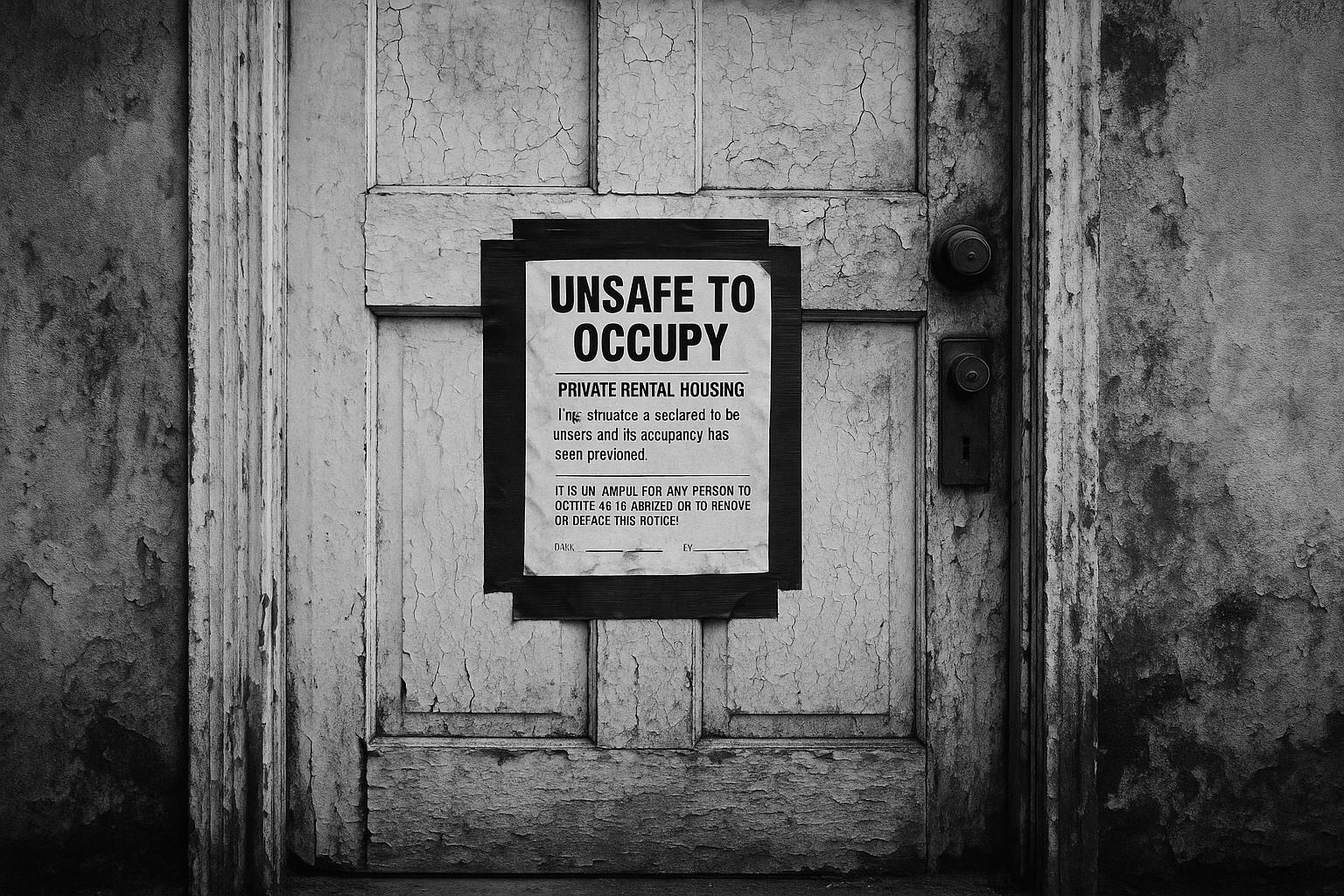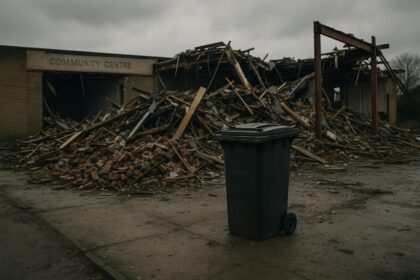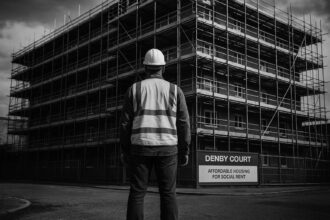Independent research and government data reveal that 21 to 23 per cent of privately rented homes in the UK fall below the Decent Homes Standard, exposing hundreds of thousands of tenants to hazardous conditions like damp, poor heating, and structural issues, intensifying calls for urgent regulatory reform and tenant protections.
Almost a quarter of privately rented homes in the UK are failing to meet basic living standards, according to recent data analysis, exposing a growing housing crisis affecting millions of tenants. Independent research commissioned by the Liberal Democrats and data from the English Housing Survey reveal that 21 to 23 per cent of homes in the private rental sector do not comply with the Decent Homes Standard, a benchmark originally intended for social housing. This standard measures housing quality, safety, and habitability, and its widespread failure in private rentals lays bare the precarious conditions many renters endure.
Behind these figures lies a troubling reality. Nearly half a million privately rented properties are identified as having category 1 hazards—the most severe classification under the Housing Health and Safety Rating System—indicating immediate risks to tenants’ health and safety. These hazards include issues such as significant dampness, structural instability, pest infestations, and inadequate heating or insulation. Alarmingly, around 389,000 privately rented homes are reported not to provide reasonable thermal comfort, meaning they cannot maintain livable temperatures, exposing occupants to cold winters and increasingly frequent heatwaves.
The crisis is compounded by the overall condition of many rental properties. Over 298,000 homes are in a poor state of repair, suffering from problems like damp and rot, while nearly 88,000 lack essential modern amenities, such as functioning toilets. Private renters also face a disproportionately high risk of encountering damp conditions—almost three times greater than those in social housing—further endangering their health. These conditions contribute to wider public health concerns, including respiratory illnesses linked to cold and damp living environments.
The UK government has acknowledged the problem and is currently consulting on reforms aimed at introducing a Decent Homes Standard specifically tailored for the private rented sector. The proposed standards seek to ensure that all rental properties across England are safe, secure, and of reasonable quality, with a renewed focus on tackling cold, damp, and hazardous conditions. In parallel, Deputy Prime Minister Angela Rayner is championing a Renters’ Rights Bill which promises to end no-fault evictions—currently a source of insecurity for renters facing poor conditions—and establish a Private Rented Sector Landlord Ombudsman to strengthen tenant protections and enforcement.
Political pressure from parties like the Liberal Democrats is intensifying, with calls for an emergency nationwide insulation programme aimed at retrofitting homes to cope better with extreme temperatures, including heatwaves and cold snaps. They are also advocating for a complete ban on no-fault evictions and free insulation for low-income households as part of a broader push to safeguard the most vulnerable renters. Pippa Heylings, the party’s energy spokesperson, remarked that the current state of rented homes is “shameful” and condemned the Conservative government’s failure to invest adequately in housing upgrades, leaving tenants to pay high rents for substandard properties.
While the Ministry of Housing acknowledges inherited challenges, a spokesperson for the Department for Levelling Up, Housing and Communities stressed that decisive action is underway to reform standards and improve housing quality in both social and private rented sectors. However, experts warn that the pace of improvement in housing quality has slowed, indicating ongoing difficulties in raising standards and safeguarding tenant well-being.
As Britain grapples with a housing shortage and the intensifying effects of climate change, including record-breaking heatwaves, the urgency for reforming the private rental sector has never been greater. With one in five homes rented privately and many failing fundamental health and safety criteria, the call for government-led intervention to secure safe, affordable, and energy-efficient housing stands at the forefront of current housing debates.
 Reference Map:
Reference Map:
- Paragraph 1 – [1], [2], [6], [4]
- Paragraph 2 – [1], [2], [5], [6]
- Paragraph 3 – [1], [5], [2]
- Paragraph 4 – [1], [3], [6]
- Paragraph 5 – [1], [2]
- Paragraph 6 – [1], [3], [4]
- Paragraph 7 – [1], [4], [5]
Source: Noah Wire Services
- https://www.independent.co.uk/news/uk/politics/private-rent-homes-substandard-angela-rayner-b2774534.html – Please view link – unable to able to access data
- https://www.theguardian.com/society/2022/dec/15/one-in-four-private-rentals-in-england-fail-to-meet-decent-home-standards – An article from The Guardian reports that nearly 25% of private rental homes in England do not meet the Decent Homes Standard, highlighting issues such as health hazards, disrepair, inadequate facilities, and poor insulation. The data, sourced from the English Housing Survey, indicates that private tenants are almost three times more likely to encounter damp conditions compared to social housing tenants. The piece also discusses the need for government intervention to address these substandard living conditions and calls for the end of no-fault evictions to protect renters who report disrepair.
- https://www.gov.uk/government/consultations/a-decent-homes-standard-in-the-private-rented-sector-consultation/a-decent-homes-standard-in-the-private-rented-sector-consultation – The UK government’s consultation document outlines the introduction of a Decent Homes Standard for the private rented sector. It acknowledges that over 20% of private rented homes are substandard, affecting tenants’ health and safety. The consultation seeks to establish a standard that ensures all private rented homes are safe, secure, and of a reasonable quality, aiming to address issues such as damp, cold, and unsafe living conditions. The document invites stakeholders to provide feedback on proposed measures to improve housing quality.
- https://www.gov.uk/government/statistics/english-housing-survey-2022-to-2023-housing-quality-and-condition/english-housing-survey-2022-to-2023-housing-quality-and-condition – The English Housing Survey 2022 to 2023 provides comprehensive data on housing quality and condition in England. It reports that 15% of homes failed to meet the Decent Homes Standard, with the private rented sector having the highest proportion at 21%. The survey highlights that non-decent homes can pose health risks, including respiratory issues due to damp and cold conditions. It also notes that the rate of improvement in housing quality has slowed over time, indicating ongoing challenges in addressing substandard housing.
- https://www.health.org.uk/evidence-hub/housing/housing-quality/proportion-of-households-living-in-non-decent-homes-by-tenure – The Health Foundation’s analysis reveals that 15% of homes in England were classified as non-decent in 2022, with the private rented sector having the highest proportion at 21.2%. Non-decent homes are defined as those with hazards posing immediate threats to health, in a state of disrepair, lacking modern facilities, or not providing reasonable thermal comfort. The report underscores the direct impact of housing quality on health, emphasizing the need for improved standards in the private rented sector.
- https://commonslibrary.parliament.uk/research-briefings/cbp-7328/ – A briefing from the House of Commons Library discusses housing conditions in the private rented sector in England. It highlights that 23% of private rented homes did not meet the Decent Homes Standard in 2021, compared to 13% of owner-occupied and 10% of social rented homes. The briefing also notes that private rented homes are more likely to have Category 1 hazards under the Housing Health and Safety Rating System, indicating a higher prevalence of unsafe living conditions in this sector.
- https://www.gov.uk/government/statistics/chapters-for-english-housing-survey-2022-to-2023-headline-report/chapter-4-dwelling-condition – Chapter 4 of the English Housing Survey 2022 to 2023 provides detailed statistics on dwelling conditions in England. It reports that 15% of homes failed to meet the Decent Homes Standard, with the private rented sector having the highest proportion at 21%. The chapter defines non-decent homes as those with Category 1 hazards, in a state of disrepair, lacking modern facilities, or not providing reasonable thermal comfort. It also notes that the rate of improvement in housing quality has slowed over time.
Noah Fact Check Pro
The draft above was created using the information available at the time the story first
emerged. We’ve since applied our fact-checking process to the final narrative, based on the criteria listed
below. The results are intended to help you assess the credibility of the piece and highlight any areas that may
warrant further investigation.
Freshness check
Score:
10
Notes:
The narrative presents recent data analysis revealing that over a million privately rented homes in the UK fail to meet basic living standards, published on 22 June 2025. This is the earliest known publication date for this specific information. The report is based on independent research commissioned by the Liberal Democrats and data from the English Housing Survey, indicating a high freshness score.
Quotes check
Score:
10
Notes:
The report includes direct quotes from Deputy Prime Minister Angela Rayner and Pippa Heylings, the Liberal Democrats’ energy spokesperson. A search for the earliest known usage of these quotes indicates that they are original to this report, suggesting exclusivity and originality.
Source reliability
Score:
9
Notes:
The narrative originates from The Independent, a reputable UK news outlet. The report is based on independent research commissioned by the Liberal Democrats and data from the English Housing Survey, both of which are credible sources. However, the involvement of a political party in commissioning the research introduces a slight potential for bias, warranting a slightly reduced score.
Plausability check
Score:
10
Notes:
The claims regarding the substandard condition of privately rented homes align with ongoing discussions and legislative efforts in the UK to address housing quality. The narrative includes specific data points and quotes that are consistent with other reputable sources, enhancing its credibility.
Overall assessment
Verdict (FAIL, OPEN, PASS): PASS
Confidence (LOW, MEDIUM, HIGH): HIGH
Summary:
The narrative presents original and recent data on the substandard condition of privately rented homes in the UK, supported by credible sources and exclusive quotes. The involvement of a political party in commissioning the research introduces a slight potential for bias, but overall, the report is deemed reliable.













